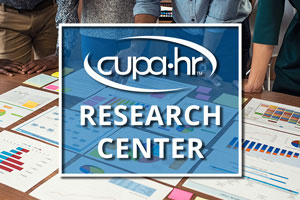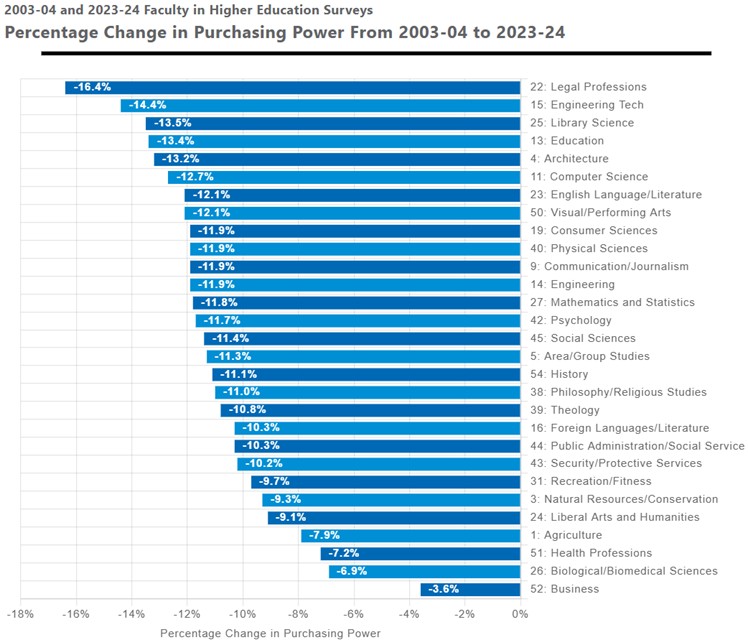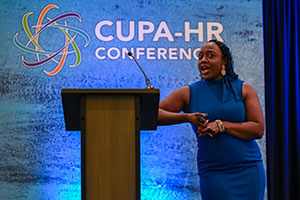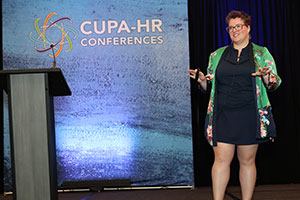by Christy Williams | May 21, 2025
For HR professionals in higher education, workforce planning has evolved into a strategic discipline. Filling positions is no longer enough — leaders must anticipate talent needs, support professional growth and align development opportunities with institutional goals. A well-designed needs assessment gives HR teams the insight to take action with confidence and create lasting impact.
In the CUPA-HR webinar, Survey Says! Using HR Data and AI to Maximize Analysis of Needs, presenters from Harvard University’s Center for Workplace Development shared how their team designed and executed a large-scale, data-informed, AI-supported needs assessment. The goal? To better understand learning needs and create targeted strategies for professional growth across a decentralized institution.
Here are the key takeaways from their process.
Start With a Strategic Why
Before sending a single survey question, clarify what you’re hoping to learn — and why it matters.
At Harvard, the team began their needs assessment with a clear objective to understand learning and development needs across various employee groups as part of a larger workforce strategy. This meant designing a survey aimed at uncovering more than surface-level training needs, asking instead: What do our employees really need to grow and thrive in their roles?
Their advice to other HR teams is to anchor your assessment in your institution’s strategic goals and organizational context. Let that “why” guide your survey design from the start.
Design a Survey That Reflects Your Workforce
A successful needs assessment is tailored to the specific population it serves rather than one-size-fits-all.
Harvard’s workforce includes individual contributors, supervisors and executives across many schools and units. Their team created targeted questions for each group and pre-populated some responses using data from their HRIS system to reduce survey fatigue and improve accuracy.
Make sure your questions are relevant to different audience segments, and use the data you already have to streamline the experience for respondents.
Boost Participation Through Targeted Communications
Even the best survey won’t produce results without strong participation. Driving engagement was one of the biggest challenges for Harvard, as it is for many institutions. Their team addressed this by securing leadership support, crafting targeted communications and clearly communicating the value of the survey to employees.
To boost response rates on your own campus, consider using champions across departments, timing your outreach thoughtfully and explaining how the data will be used to benefit staff.
Use AI Thoughtfully to Analyze Large Data Sets
If your survey includes open-ended responses, you’ll likely end up with more data than you can quickly process — especially if your institution is large. This is where AI can help.
Harvard’s team used a combination of AI tools to analyze thousands of comments and identify themes. But they stressed that the human element remained critical. They invested time in crafting the right prompts, testing outputs and verifying results before presenting them to stakeholders.
Their approach to AI offers an important lesson: AI can accelerate analysis and bring fresh insights, but it’s not a shortcut. You need to build a process that includes human judgment, data verification and transparency.
Integrate HR Data for Deeper Insights
One of the most impactful decisions the Harvard team made was linking survey responses to existing HR data. This allowed them to connect learning needs to specific job roles, departments and demographics — enabling more targeted follow-up and planning.
By incorporating HRIS data, they were also able to personalize survey questions and reduce respondent burden. That integration enhanced both the quality of their data and their ability to act on it.
If you’re planning a survey, consider how existing HRIS data can be used to sharpen your questions and deepen your analysis.
Turn Results Into Action
The final — and perhaps most critical — step is using what you’ve learned.
At the time of the webinar, the Harvard team was in what they described as the “where are we now” stage and had begun implementing some of the recommendations from their survey analysis. They emphasized the importance of translating results into practical strategies that support learning and development, talent mobility and organizational effectiveness.
To do the same on your campus, be sure to:
- Share key findings transparently with stakeholders.
- Identify priority areas for development or investment.
- Use insights to shape programming, leadership development or change management strategies.
Embrace Experimentation and Continuous Learning
The Harvard team acknowledged that this process wasn’t perfect — and that was okay. They embraced experimentation, learned from trial and error, and remained open to improving their approach as they went.
Their experience is a reminder that innovation in higher ed HR — especially when integrating AI — is a journey. Don’t be afraid to pilot new tools and adjust your process.
Watch the Webinar Recording
Interested in learning more about Harvard’s process? The full webinar recording and slide deck are available here.
More CUPA-HR Resources
Harnessing the Power of Big Data for Sound HR Decision Making — This article examines using workforce data to make good business decisions with confidence.
Data Visualization and Storytelling Tips and Tools for HR — This on-demand CUPA-HR webinar covers practical tips and tools you can use to share compelling data stories and data visualizations.
AI in Higher Education HR Toolkit — Best practices and tools for using AI technologies thoughtfully and safely.







 Because our brains interpret emotional threats in the same way as physical threats, feeling unsafe at work can provoke a similar feeling to walking alone in a dark parking garage or seeing a snake on a hiking trail. But when we feel a sense of psychological safety and social belonging, our brains shift into connected mode. When we feel safe, we’re more likely to collaborate with our team, be less resistant to change and feel creative.
Because our brains interpret emotional threats in the same way as physical threats, feeling unsafe at work can provoke a similar feeling to walking alone in a dark parking garage or seeing a snake on a hiking trail. But when we feel a sense of psychological safety and social belonging, our brains shift into connected mode. When we feel safe, we’re more likely to collaborate with our team, be less resistant to change and feel creative.


